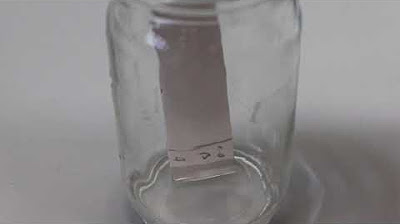Keterampilan Persalinan Normal - Dr. dr. Cut Meurah Yeni, Sp.OG (K)
Summary
TLDRIn this instructional video, Dr. Yeni, an obstetrician and lecturer at Syiah Kuala University, demonstrates the steps of a normal childbirth. She emphasizes the importance of systematic, correct procedures for assisting in childbirth. Key actions include preparing necessary medical equipment, ensuring the mother's position is correct, monitoring the fetal heart rate, and guiding the mother through the pushing process. The video also covers the management of the baby's delivery, including potential interventions, and post-delivery care for both the mother and the baby, ensuring a safe and smooth delivery process.
Takeaways
- 😀 Ensure that the patient has emptied their bladder before proceeding with delivery.
- 😀 The assistant should be prepared with necessary equipment including clamps, scissors, and sterilized gloves.
- 😀 Verify the patient's position in lithotomy, ensuring the cervical dilation is complete and the amniotic sac has ruptured.
- 😀 Check the fetal heart rate (120-160 bpm) and educate the family and patient on how to push during contractions.
- 😀 Assist the delivery by ensuring the baby's head is visible at the vulva, preventing perineal tearing by applying gentle pressure.
- 😀 If the umbilical cord is around the baby's neck, loosen it or cut it if necessary.
- 😀 After the baby’s head is delivered, ensure the proper rotation to allow the shoulders to be born safely.
- 😀 Ensure the newborn breathes spontaneously, dries the baby, and check the mother’s fundus to confirm the pregnancy is single.
- 😀 Administer oxytocin to the mother to prevent postpartum hemorrhage and promote uterine contractions.
- 😀 Cut and clamp the umbilical cord, then proceed with delivering the placenta, ensuring its complete expulsion.
Q & A
What is the purpose of this demonstration in the script?
-The purpose is to demonstrate the correct and systematic procedure for assisting in a normal childbirth, ensuring that each step is done properly to ensure the health of both the mother and the baby.
What is the first step in preparing the patient for childbirth?
-The first step is ensuring that the patient has emptied her bladder before being positioned on the delivery table.
What are the key tools needed during the delivery?
-Key tools include Kocher clamps, anatomical and surgical forceps, scissors for tissue and sutures, a clamp for the umbilical cord, an apron, goggles, a mask, sterile gloves, and towels for placing under and over the mother's abdomen.
How do you confirm that the mother is ready for delivery?
-The mother’s cervix must be fully dilated, and the amniotic sac should either be broken or manually broken if not already, to confirm that the delivery can proceed.
What should be done if the amniotic sac has not yet ruptured?
-If the amniotic sac hasn't ruptured, it must be manually broken to allow the delivery to continue.
What is the normal fetal heart rate range during delivery?
-The normal fetal heart rate range is between 120-160 beats per minute.
What is the technique for helping the mother push during contractions?
-The mother is encouraged to push when contractions occur. She is guided to avoid excessive strain and to push at the right time to ensure the baby's safe passage.
How can the medical team prevent perineal tearing during delivery?
-The medical team prevents perineal tearing by providing support to the perineum and carefully guiding the baby’s head out of the birth canal.
What is done if the umbilical cord is wrapped around the baby’s neck?
-If the umbilical cord is wrapped around the baby's neck, it should be loosened, and if it's too tight, it can be cut to prevent harm to the baby.
What steps are taken after the baby is delivered?
-After delivery, the baby’s breathing is checked and the body is dried. The doctor also ensures that the uterus contracts properly and administers oxytocin to the mother to prevent excessive bleeding.
What is done to ensure the placenta is properly expelled?
-The placenta is delivered after the baby, with controlled traction on the umbilical cord. The doctor checks that the placenta has detached properly, using methods like Kushner, Kain, and Stresman to help remove it completely.
How is the mother’s postpartum recovery assessed?
-Postpartum recovery is assessed by checking for any perineal tears, monitoring uterine contractions, evaluating blood loss, and ensuring the mother is comfortable. Blood pressure and pulse are also monitored.
Outlines

This section is available to paid users only. Please upgrade to access this part.
Upgrade NowMindmap

This section is available to paid users only. Please upgrade to access this part.
Upgrade NowKeywords

This section is available to paid users only. Please upgrade to access this part.
Upgrade NowHighlights

This section is available to paid users only. Please upgrade to access this part.
Upgrade NowTranscripts

This section is available to paid users only. Please upgrade to access this part.
Upgrade NowBrowse More Related Video

Talking Multimedia Learning with Dr. Richard Mayer

Final IMU253 CHAPTER 1 1 Elements of Man & Creations

Complex Amalgam Restoration | Part 2

Gagne´s theory

The Thought Process Supporting our Academic Writing Assignments

Skills Lab - Pemasangan NGT

Performing Thin-Layer Chromatography to analyze organic samples
5.0 / 5 (0 votes)